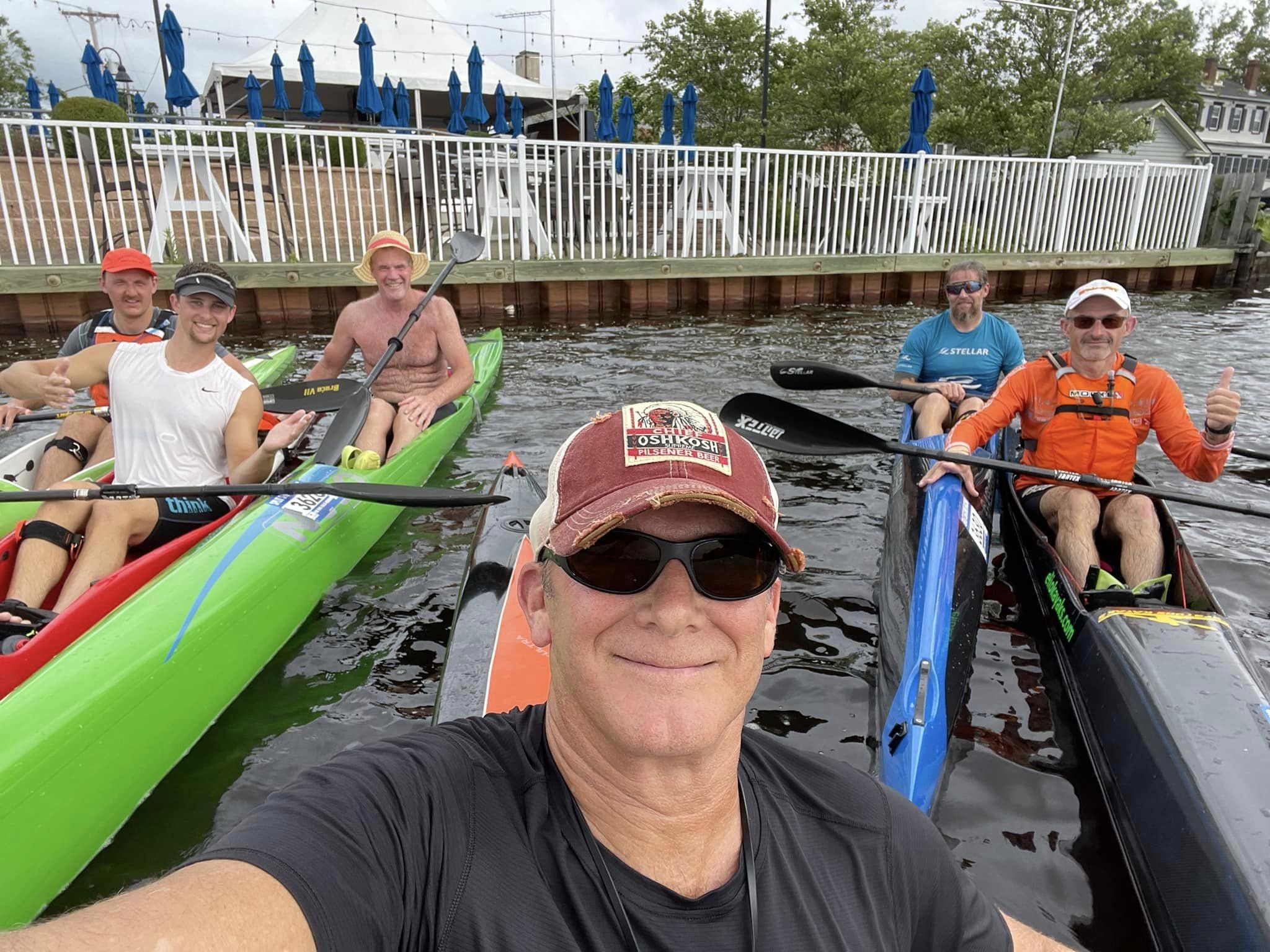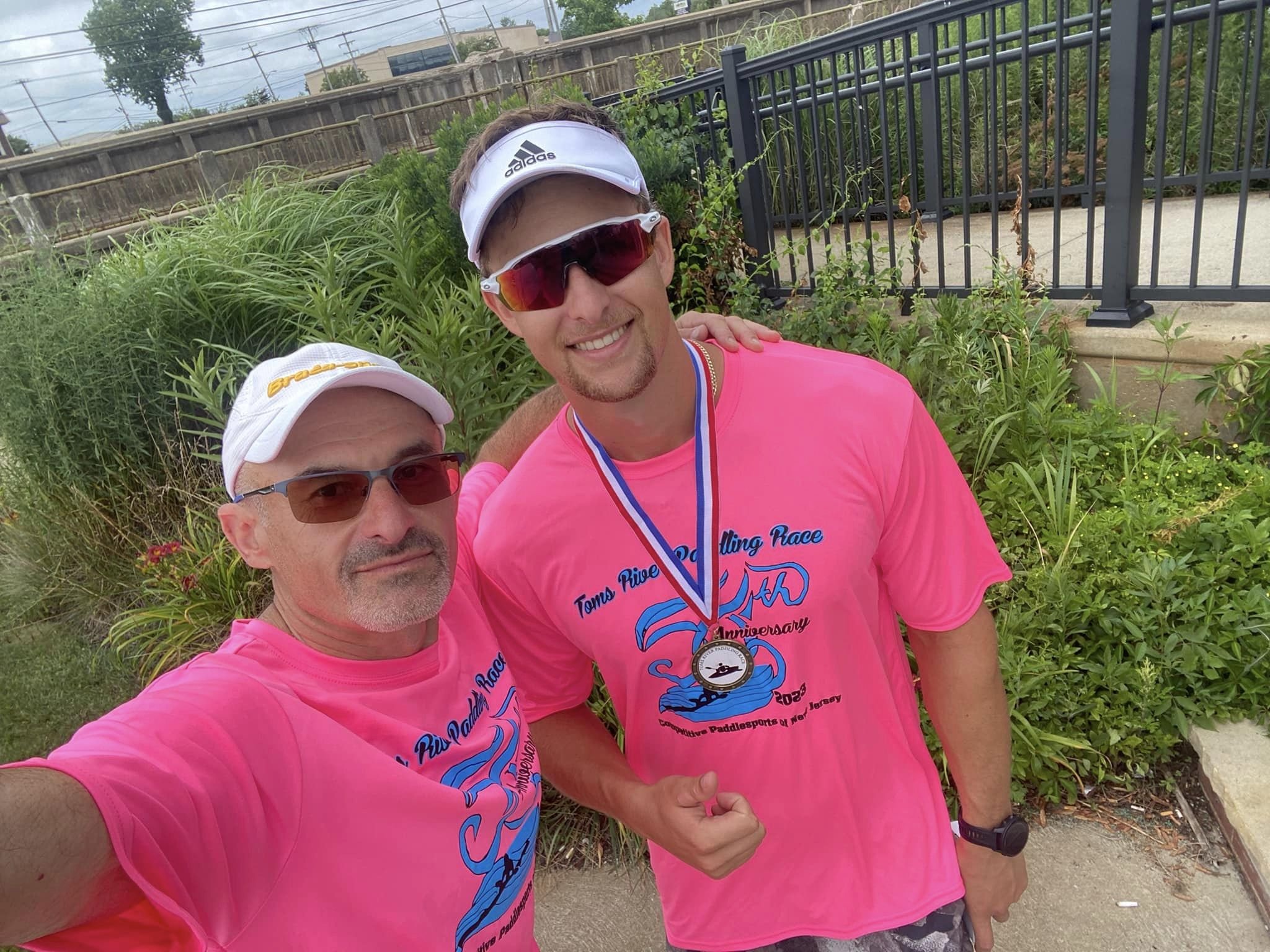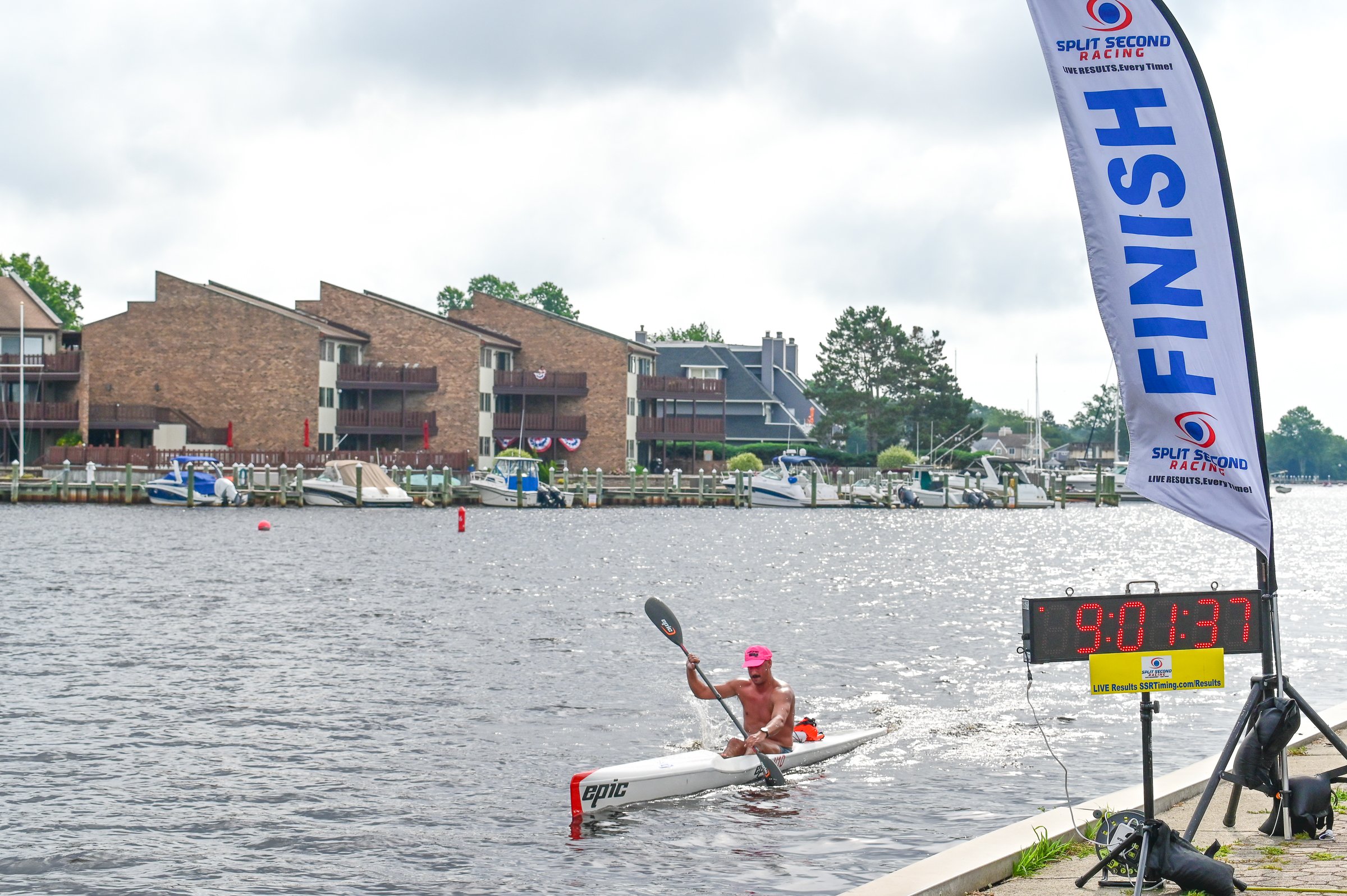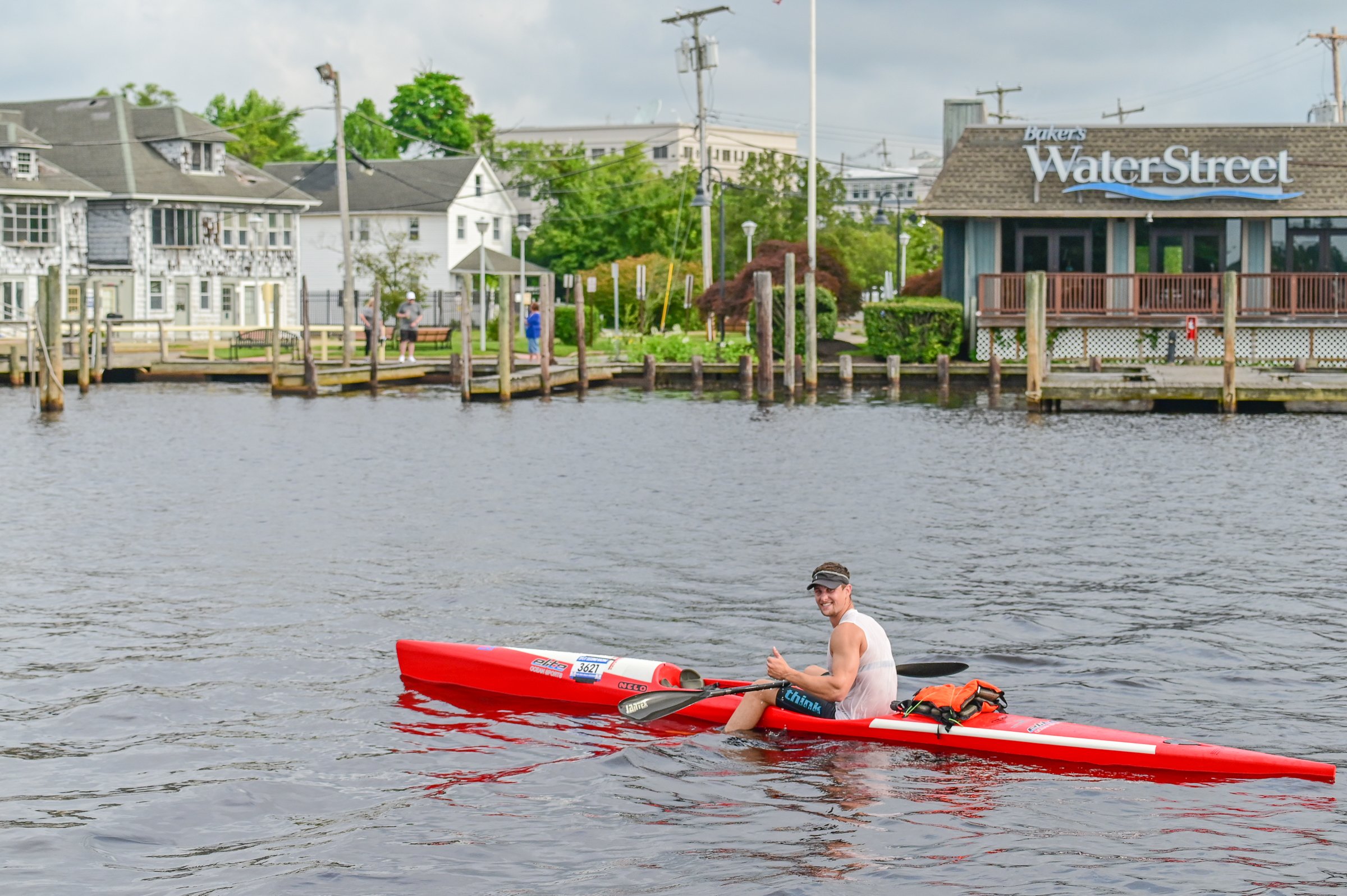The 50th Toms River Race: Odds in Favor
Part I The Preparation
After the successful completion of the reincarnated Toms River Race in its 47th year in 2020, the year of canceled events and dashed hopes, everyone encouraged me to believe that reorganizing the race would become easier and easier with the pandemic storm cloud finally lifted. I began to relax as everyone seemed to be right: the Toms River Race of 2021 attracted triple the number of sponsors from 2020 and hosted 84 paddlers, a 40% increase from the previous year’s record turnout. With friends and even my tax agent recommending that I form a limited liability company to maintain the Toms River Race, I founded Competitive Paddlesports of New Jersey in February 2022 before applying for a permit to have the 49th event. No one in the paddling community could’ve prophesied a Cassandra-like future for the race and for the very township of Toms River: a project to build a high-rise condominium complex that would overtake the area of the parking lot and more significantly, the public boat ramp we depended on using for the race venue. By the grace of local bureaucracy, however, the township’s project stalled, and the race venue remained untouched, leaving me the privilege to get the permit for the 49th Toms River Race.
But what was the probability of seeing the race in its 50th year? Since the Irons Street parking lot and boat ramp were already sold to a private entity whose developers were anxious to start demolition early this year, I was desperate to find an alternative venue for a race on Toms River. Ocean Gate Beach seemed nice. No, parking was limited, according to the mayor of Ocean Gate, who then suggested that Beachwood had ample parking and a community center. “No,” said the Council of Beechwood, “our area is too small to accommodate your event.” What about Shelter Cove with 100 parking spaces, modern restrooms, and a beautiful beach? “No,” said the Toms River recreation department, “Shelter Cove is a paid bathing beach during the summer.” What about Money Island? “No! How dare you ask to have your own paddling event on a part of a beach where I have a concession stand of high-quality wreck [Freudian misspelling] boats,” said a locally infamous little businessman with a big two-year contract with the Toms River township. I was feeling as frustrated as Snoopy in the T.V. episode when he was kicked out of various public places while a baritone voice-over chanted, “No dogs allowed.” The difference was that I was hearing “No paddlers allowed” in an environmentally-conscientious state that takes pride in preserving land and access to water. (Can you tell when I’m facetious and when I’m serious?)
Only race directors understand that prepping for a race means elevating one’s heartrate to 95% of one’s maximum for 95% of one’s “weekly training” (i.e. time spent on communication with various town characters) for several months. A race director’s sweat test is a measure of the amount of patience lost like electrolytes while waiting for the approval of a special use permit, which can be defined as the authorization given by dysfunctional functionaries to “rent” land and water for a few hours on a single day.
With Money Island now a no-go zone, what were the odds in favor of having another Toms River Race? As my readers can probably surmise, I love numbers. The odds in favor seemed close to zero for a semicentennial legal event that I was starting to wonder would be worthwhile at all to the paddling community. But once again, unexpected help intervened. First, the Toms River recreation department confirmed and guaranteed to me that the Irons Street venue would incredibly stay open for an event on July 9. Second, my friend and fellow surfski paddler Peter Sundack, lieutenant of the Toms River police, who had already endured a flurry of panicked text messages I sent to him and to which he responded each time with infinite patience and support, agreed to help me with all further communication with the township and with coordination of safety boats on the race course.
Lieutenant Peter Sundack enjoying the race after all his efforts to make the race possible.
Photo by Lisa Elrick
Two weeks before the 50th Toms River Race, Lisa Elrick, my friend and event photographer, voluntarily saved me a two-hour trip to the venue by driving there herself. Shortly after her arrival, she met up with Pete to show him her concerns: the high fence now surrounding the parking lot, the locked gate to the boat ramp, and the unkept grass in the only remaining area open to the boat ramp from Water Street. Using his natural diplomacy, kindness, and self-initiative, Pete made certain that we still had access to the boat ramp, requested that the grass be cut, and ensured that the restrooms would be open and the boat launch area safe on race day. Thanks to Lisa and Pete, my blood pressure decreased the last week of the race.
Venue Open for Us on Race Day, thanks to the efforts of Lisa and Pete
Photo by Bradley Ethington
Yet we faced still other setbacks. With a chance of a thunderstorm forecasted for race day, I made the decision with support from Pete and the fire department to start the race one hour earlier than planned so that everyone would have enough time to exit the water before a storm. On the evening before the race, I decided to visit the boat launch before returning to my hotel. Oh no!— a thick crust of brown muck had washed up from wind and tides onto the underused boat ramp. No elite athlete would set foot or hull into 25 feet of slippery grime. Pete, who was also planning to race with us, cleaned the boat ramp by arriving extra early.
Some of you might be skimming over what you just read, impatiently wondering, “Where’s the real race report?” And I wouldn’t blame you: the race is not about anyone but you, the athletes. Yet not many of you are aware of what occurs behind the scenes to make possible a legal, safe event where you can showcase your paddling talent. We should all be grateful for selfless volunteers like Lisa, Pete, others you will never meet, and still others I will name later who helped you on race day. Whatever amount of determination I have as a race organizer is meaningless in comparison to those people who enabled me to give you a race that we all hope you remember like a dream that came true.
Part II The Race
I am personally proud of the 50th race’s dynamic start line: of 39 paddling crafts, there were 24 surfskis, five outrigger canoes, three seakayaks and three SUPs, two open water sculls, and a faithful prone board. The paddlers themselves represented diversity in skill level and experience, among whom, a few family members, some paddling in honor of family, paddlers new to The Toms River Race and/or new to paddle races, paddling pals I hadn’t seen in years and new paddling friends I made just this year.
After knowing him for five years on social media and currently receiving virtual coaching from him, I finally met in person national kayak superstar Jesse Lishchuk, who made a special guest appearance with his father Vadim. Without the great white shark Sean Brennan and Stone Cold Craig coming this year, who would challenge Jesse? I anticipated that small NJ fish might appear bigger in a smaller pond but who could predict the results when Ed Joy, one of the most skilled paddlers on the east coast and multi-times winner of Ride the Bull and the Jamestown Double Beaver, races on the roughest New England waters, was returning to Toms River? To complicate predictions, Massachusetts resident, multisport athlete, and flat-water-kayaker -turned-open -water lover Joel Pekosz was a new registrant. Would Anthony Colasurdo, prone board record-breaker of New Jersey’s hardest race, the 21.5-mile Absecon Island paddle for the Dean Randazzo foundation start setting records on surfski? Or, would Pennsylvania native Trevor Wagner, who had just come home from competing in wildwater championships in Europe, take his revenge on his second Toms River Race? The suspense was intense!



Jesse expectedly took an immediate lead with Ed’s bow staying within a foot of Jesse’s while Rob and Joel followed closely behind. But Ed and Jesse, whether desiring to throw their opponents off their wake or to take advantage of the ebb tide, decided on taking a much wider line for the next 2.5 miles. Was the lead toying with the train of Rob, Joel, and Anthony or were they unaware of the turnaround? Anthony was hence puzzled but undeterred in his front-seat view of the four paddlers ahead of him. According to Anthony, taking the direct route helped Rob to close the gap on Ed and Jesse, who all passed the turnaround buoy within seconds of each other. In the meantime, Joel was not about to let Rob off his warpath as he steadily closed the gap on the third position. By the time I saw the lead pack just before reaching Long Point, the sandy finger-like mini-peninsula marking three miles from the start, I saw Jesse and Ed on my port, chatting and laughing as they paddled as effortlessly as two friends strolling through a park on a Sunday morning. Their nonchalance was not in vain for how could two park loafers worry about a lone wolf well out of sight? Rob, now at least twenty boat lengths behind Jesse and Ed, looked hungry for prey but was clearly concentrating his efforts on not becoming prey to Joel, a hunter on a deadly mission to wipe out his competition. In the end, the ranking was steadfast: Jesse took the gold, Ed the silver just under two minutes later, and Rob the bronze, after another 30 seconds. With Joel just 15 seconds behind third place, and Anthony honorably rounding out the fifth position, I am certain that Joel and Anthony are just warming up for stellar years ahead on surfski races.




The women’s competition proved to be just as fierce. I had a better start than I thought, and quickly saw myself accelerate to, then maintain a level four heartrate zone for some time. The southeast breeze that predominates the Jersey shore in the summer was unwavering but light, so it did not impede me from staying within a target pace of 11 to 12-minute miles. But after rounding Long Point, I began to slow down in the infamous carwash ride near the turnaround, which was not nearly as rough as last year, but was still adequately annoying to my technique. The water made me feel as if I were pulling on a tight grey skirt with infinitely long layers of tangled ruffles. Finally, and as expected, Greg Lowry came grinning past me before I reached the turnaround buoy, cueing me that the first paddler in the second wave was starting to topple the surfskis like dominoes. I made an awkward, much too wide turn around the buoy and was still looking over my shoulder for Tassana Landy, the only other lady on surfski, who had already proven from her results in the paddle Around the Cape that a transition from rowing to surfski paddling can be as easy as a cook switching from baking cookies to brownies. I was happy to greet her as she was making her way steadily towards the rough water.
On my return, I slid out easily of the ruffled skirt as I was able to catch and ride many waves back to Island Heights. My pace was zigzagging but I didn’t give up hope until I saw Holly Barbera pass me on her OC-1, as though I were driftwood. Now the second wave ladies were catching up to me. I still had two miles to paddle but whether I blamed stress or physical exhaustion, my battery was dying. In keeping with my rule of not riding the wake of anyone outside my own class, I tried to take a left then a right of Holly, and then when that failed, I let go of the fantasy of keeping her within reach as she became a dot on the horizon. But I had another problem: second-fastest lady of the day OC-1 paddler Sharon Adamski was muscling up to me within the last yards of the finish line. With such strong single-bladed paddlers beating me, I looked down at my paddle to make sure I wasn’t holding a toothpick. Perhaps acquiescing too quickly or relenting to mental and physical fatigue that I had been fighting for what seemed like years, I paddled slowly but deliberately to the finish. I am in awe of Holly, who won overall with a time of 1:20:57, and Sharon, who finished second under two minutes after Holly. With my time of 1:32:40, I was so close to my goal of finishing in 90 minutes but I felt satisfied that I had raced in the event I organized. As a surfski debutante, Tass deserves the honor of what I call BIB (butt-in-bucket) status, never allowing herself to capsize in water she claimed was more confused than the ocean around Cape May.
Other surfski beginners also merit applause: Anthony’s brother Joe Colasurdo, who raced for the first time after incredibly trying surfski since April. Emerson Yang, who is currently transitioning from sea kayak to surfski paddling had been courageously paddling solo in open water for the past few months and was equally ready for his first race. Further, Aaron Baldwin, Pennsylvanian second-timer on Toms River was poised on a new surfski.
More great wins include: Oscar Hernandez for Men’s SUP; Josette Lata for Women’s SUP; Wendy Lau for women’s sea kayak; and, Bob Russo for Men’s Rowing. Don’t forget to review all the results online!
Aaron Baldwin, Photos by Lisa Elrick
Part III Conclusion
With an after-party of sandwiches, Italian ice, and a raffle that brought Christmas in July to Toms River, thanks to our generous sponsors Epic Kayaks, Goodboy Paddlesports, and Vaikobi, we even had the weather gods to thank: the sky hadn’t shed a tear of sadness on our heads, and Thor, had never threatened us with angry streaks of light or a booming voice. With greatest thanks to Josette Lata and her husband Ed O’Kinsky for placing the buoys, to Bill Ruthrauff who served as the safety check-in officer and coordinator with the timer, and to Pete Sundack, every paddler returned without incident. And what a splendid reunion with friends from the Hoboken Cove Community Boathouse, my new SUP neighbor by the Raritan Bay Dominique Ha, and new sea kayak racer Mike Lynch, whom I knew from the Jersey Shore Sea Kayak Association. Although I cannot mention everyone, you will always be dear to me for your dedication and support. You are all proof that the tide (in every sense) can turn odds against into odds in favor of one of the most extraordinary celebrations of life: paddling. The Toms River Race tradition has thus lived for 50 years.




















